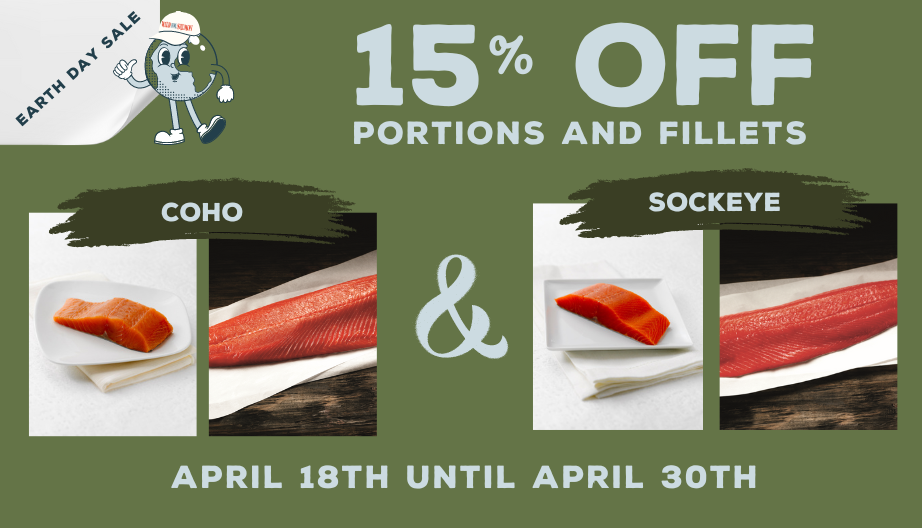Wild for Salmon is dedicated to our customers’ experience with our company and our wild Alaska seafood. While the American understanding of fisheries, sustainability and ocean ecosystems constantly shrinks and expands, we want to make sure we continue to be transparent here at Wild for Salmon. In this blog, we’ll tell the in-depth story of our most popular product: sockeye salmon.
Our sockeye salmon season: when is it and how does it work?
Wild sockeye salmon is the product we founded our business on, and the thing that Steve and crew fish for themselves aboard the F/V Ava Jane in Bristol Bay, Alaska each summer. We source our other Alaska seafood from trusted, small-boat fishermen who focus on quality and sustainability.

Steve heads up to Bristol Bay in June and fishes until about the first week of August. The buzz in Bristol Bay can be felt as soon as the small plane hits the tarmac in early June. Local folks have been preparing for months, net builders are moving quickly, and the anticipation of the salmon return is strong! Sockeye salmon are just one species of salmon that return to Bristol Bay, Alaska each summer, but they are the most prolific. In 2021, experts are expecting 51 million sockeye salmon to return to the watershed.
So, how do they get there? Where do they come from? When are they harvested? And why does my shipment of Alaska salmon come from central Pennsylvania?
The salmon life cycle is astonishing. This blog will outline their migration, our harvest process, and the work we do to make this wild protein the most sustainable, delicious and affordable option for you and your family.
The Sockeye Salmon Cycle
The Pacific Salmon life cycle has five stages: eggs, alevins, fry, smolt and adult fish! This chart from Washington’s environmental education nonprofit, Columbia Springs, goes in depth and breaks it down by species.
All Pacific salmon species, except the Kokanee, are anadromous. This means the fish “ascends rivers from the sea for breeding,” - as Miriam Webster puts it. During the late spring and throughout the summer, sockeye salmon return to the shallow riverbeds they hatched in to lay their eggs, spawn and eventually perish.

- The eggs will hatch after about three months in the nest of pebbles that become the salmon’s spawning ground - known as the redd.
- At this point, the sockeye salmon hatch into alevins. Similar to tadpoles, this phase is between an egg and a fish in which the young fish is still attached to the yolk sack of the egg.
- The young sockeye will then grow into the stage called “fry” and spend 1-2 years in the freshwater lakes and streams at the headwaters of Bristol Bay.
- Then, as the fish mature into adult salmon, they will head out into the Bering Sea to spend 2-3 years in the ocean. Fishermen do not catch the fish on their way out into the ocean, but on the return.
Questions about this unique animal and its lifecycle and many more are answered on this amazing National Park Service site. Katmai National Park is at the headwaters of some of the Bristol Bay’s river systems.
The Wild for Salmon Cycle
Our seasonal cycle varies slightly from the sockeye, but we rely on it to provide great quality fish to you, our customer. We wanted to include our role in sourcing the sockeye salmon in this blog to give our readers a strong understanding of our dedication to sustainability and quality. Although salmon only run upriver past our boats for a few weeks a year, we honored to be able to provide high-quality frozen sockeye salmon year round.
A look into our year...

Summer
A Bristol Bay fisherman’s year begins in June because the sockeye salmon migrate from their life in the open Pacific Ocean to the freshwater where they will lay their eggs or spawn. In Bristol Bay, Alaska, millions of fish complete this process in just six short weeks. Fishermen harvest a small percent of these fish as they flood the bays on the way to one of Bristol Bay’s rivers from mid-June to early August.
Because we deliver our salmon to our partner processor, Leader Creek Fisheries, our sockeye salmon are simultaneously being caught and prepared for consumption. Together, both the F/V Ava Jane crew and the team at Leader Creek take utmost care of the fish first on board then in the fillet line. Leader Creek then flash freezes the salmon fillets using a state-of-the-art spiral freezer. This machine freezes the fish at a temperature lower than your home freezer to freeze them evenly and rapidly for best quality.
Fall
Following the sockeye salmon run and fishing season, we work with Leader Creek Fisheries to package up the fish and ship it to our Wild for Salmon Headquarters in central Pennsylvania in late August annually.
- First, the frozen salmon fillets are transported from Bristol Bay to cold storage in Seattle, Washington via barge.
- Second, the fillets are trucked to Wild for Salmon’s Bloomsburg storefront.
- Finally, our in-house fulfillment staff begins making our delicious value-added products, like salmon dip, or shipping vacuum-packed fillets and portions to you.
Because Steve and Jenn Kurian returned to their hometown of Bloomsburg, PA after a few years of adventuring on the west coast, Wild for Salmon's homebase is in central Pennsylvania. What started at farmer’s markets in the area became the Wild for Salmon storefront and, eventually, an online fulfillment center.

Winter
During the winter months, many fishermen are working on their boat, fixing up their nets, and - in our case - shipping fish across the country! We ship multiple Alaska species in order to make this sustainable, nutritious and delicious protein available and accessible to more families looking for an easy weeknight meal they can feel great about.
The sockeye salmon harvest does not take place during the winter, but our partners fishing for whitefish, like Pacific Cod, are hard at work at sea during the winter months.
Spring
As spring rolls around, the plans and anticipation to fly up to Bristol Bay mount and continue. Captains are looking for crew and booking flights. And, Wild for Salmon customers are ordering their second box as grilling season ramps up!
Gotcha - but that means salmon is only fresh in the summer?
Not at Wild for Salmon! Because of the care our whole team puts into harvesting, processing, freezing, packaging and shipping sockeye salmon, we are proud to share that our product is fresh all-year round. Unfortunately, there is much confusion among consumers who have been taught to only buy “fresh” fish, even when that product is unavailable. Most markets and in-person shopping experiences sell previously-frozen fish as “fresh” by simply thawing it out. To dive into the difference and importance of good quality freezing technology, you can read our What is fresh? What is frozen? explanation here.

Arrives frozen, tastes fresh as can be
The spiral freezer at Leader Creek Fisheries, as well as other technology like great vacuum-sealing, means that the fish Steve and crew take care so well on the boat maintains its great quality for a full two years after harvest.
Because the sockeye salmon run is just a few short weeks out of the year, the only way to eat “fresh”, never-frozen sockeye salmon is to catch it yourself on the banks of a river during the summer months. We hope you get the chance to experience it one day!
Until then, Wild for Salmon is here for you! To purchase delicious tasting and nutritious sockeye salmon, click here. To learn how to thaw fish properly at home, click here.

 Wild Alaska Salmon
Wild Alaska Salmon Alaska Salmon Burgers
Alaska Salmon Burgers Smoked Salmon & Seafood
Smoked Salmon & Seafood Wild Alaska Whitefish
Wild Alaska Whitefish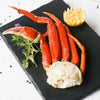 Wild Shellfish & Shrimp
Wild Shellfish & Shrimp Wild Albacore Tuna
Wild Albacore Tuna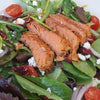 Canned Seafood
Canned Seafood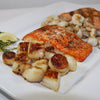 Meal Box & Samplers
Meal Box & Samplers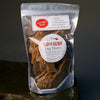 Pet Products
Pet Products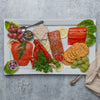 Gifts
Gifts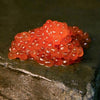 Specialty
Specialty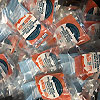 Wholesale Ordering
Wholesale Ordering